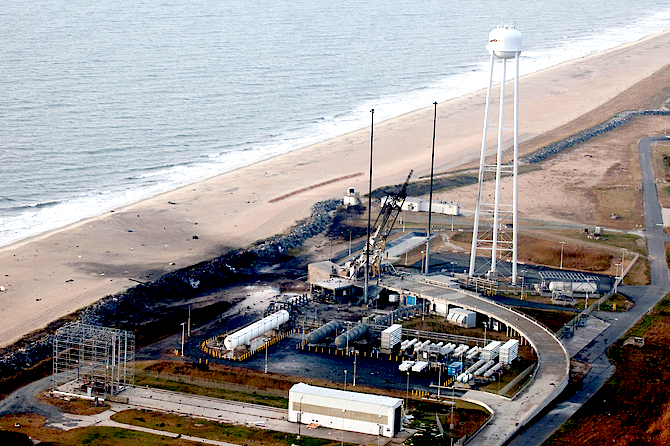[SatNews] There is much to be learned from the recent Antares catastrophic failure, and responding quickly is the first positive step in the process.

Over the weekend, Orbital confirmed the participation of the following individuals who will serve on the Antares launch failure Accident Investigation Board (AIB), which is being led by Orbital under the oversight of the Federal Aviation Administration (FAA). The composition of the AIB is as follows:
Chairman

David Steffy
David Steffy, Chief Engineer of Orbital’s Advanced Programs Group
Mr. Steffy joined Orbital Sciences Corporation in 1987 and currently serves as Chief Engineer of the Advanced Programs Group. He previously led the Taurus II Program to develop a new medium-class launch vehicle. Earlier, he managed the group's defense space systems business area. Mr. Steffy also was Senior Vice President and Deputy General Manager of the GEO communications business area where he was responsible for Star-1 programs, launch vehicles and support of new business efforts.
Prior to assuming these responsibilities, Mr. Steffy was Program Manager for the BSAT-2a/b programs where he led the development of two direct-broadcast satellites for Japan. Earlier, he led the ORBCOMM Flight Model 1 & 2 program and the follow-on ORBCOMM constellation program to develop, build and fly 34 sophisticated LEO communications satellites. Mr. Steffy holds three patents from the development of these satellites, which originated Orbital's on-going MicroStar product line.

An aerial view of the Wallops Island launch facilities taken by the Wallops Incident Response Team October 29 following the failed launch attempt of Orbital Science Corp.'s Antares rocket October 28. Image Credit: NASA/Terry Zaperach
Mr. Steffy joined Orbital 23 years ago as the systems engineering manager for the development of the Pegasus launch vehicle, and was the vehicle engineer for the first flight. He has also held key roles in Orbital's initial expansion into satellites. Previously, he worked in various systems engineering positions at Hughes Space and Communications (now Boeing Satellite Systems) on communications, defense and planetary satellites.
Mr. Steffy holds B.S. and M.S. degrees in Aeronautics and Astronautics from the Massachusetts Institute of Technology. He resides in Great Falls, Virginia with his wife and four children.
Members
- David Swanson, Senior Director of Safety and Mission Assurance for Orbital’s Technical Operations organization
- Wayne Hale, Independent Consultant and Former NASA Space Shuttle Program Manager
- David Cooper, Member of Orbital’s Independent Readiness Review Team for the company’s Launch Systems Group
- Eric Wood, Director of Propulsion Engineering for Orbital’s Launch Systems Group
- Tom Costello, Launch Vehicle Assessment Manager in the International Space Station Program at NASA’s Johnson Space Center
- Matt Lacey, Senior Vehicle Systems Engineer for NASA’s Launch Services Program
FAA Oversight Team
- Michael S. Kelly, Chief Engineer, FAA Office of Commercial Space Transportation
- Marcus Ward, Mishap Response Coordinator, FAA Office of Commercial Space Transportation
Antares Data Review:
The AIB is initially focused on developing a “fault tree” and a timeline of the important events during the launch sequence. Due to the large amount of data available, the AIB is able to work with a rich source of information about the launch. One of the initial tasks for the AIB is to reconcile the data from multiple sources, aprocess that is now underway, to help create the launch sequence timeline.
Launch Site Status:
Over the weekend, Orbital’s Wallops-based Antares personnel continued to identify, catalogue, secure and geolocate debris found at the launch site in order to preserve physical evidence and provide a record of the launch site following the mishap that will be useful for the AIB’s analysis and determination of what caused the Antares launch failure. The debris is being taken to a NASA facility on Wallops Island for secure and weather resistant storage.
“I want to praise the launch team, range safety, all of our emergency responders and those who provided mutual aid and support on a highly-professional response that ensured the safety of our most important resource—our people,” said Bill Wrobel, Wallops director. “In the coming days and weeks ahead, we'll continue to assess the damage on the island and begin the process of moving forward to restore our space launch capabilities. There's no doubt in my mind that we will rebound stronger than ever.”
The initial assessment is a cursory look; it will take many more weeks to further understand and analyze the full extent of the effects of the event. A number of support buildings in the immediate area have broken windows and imploded doors. A sounding rocket launcher adjacent to the pad, and buildings nearest the pad, suffered the most severe damage.
At Pad 0A the initial assessment showed damage to the transporter erector launcher and lightning suppression rods, as well as debris around the pad.

